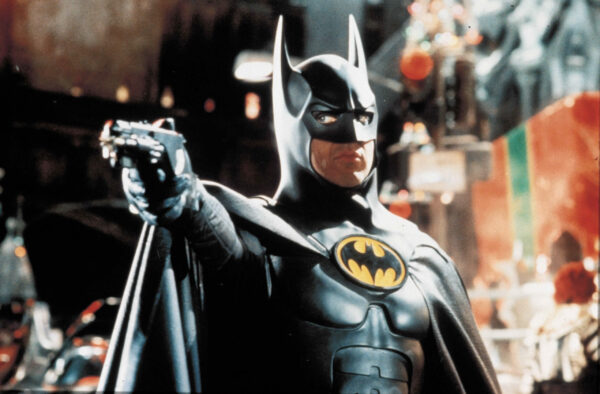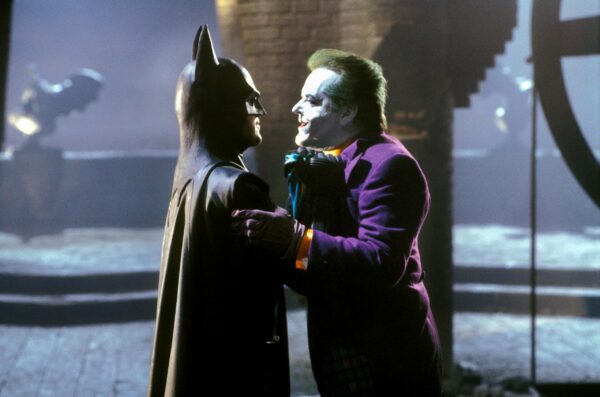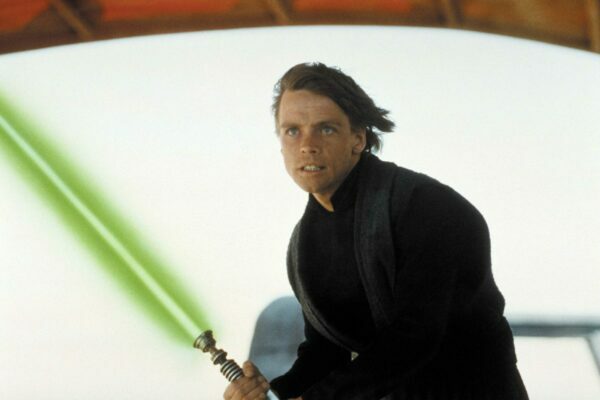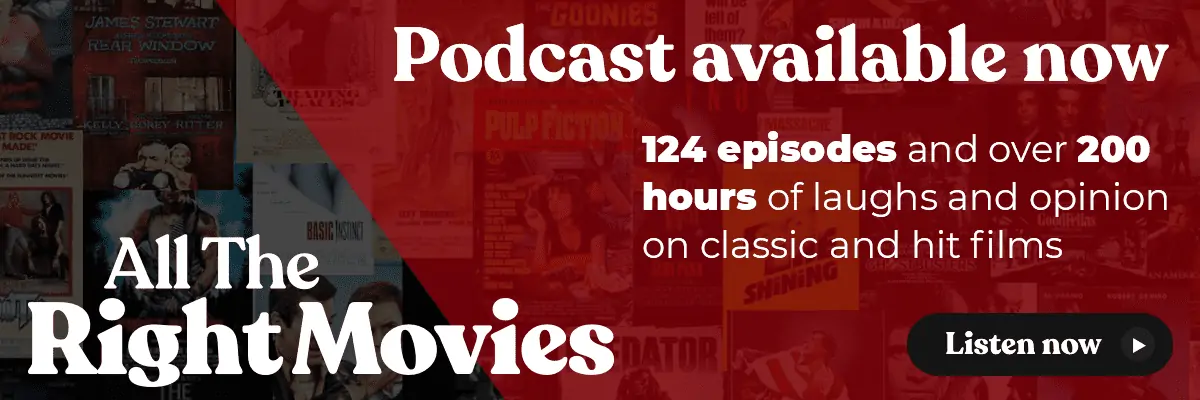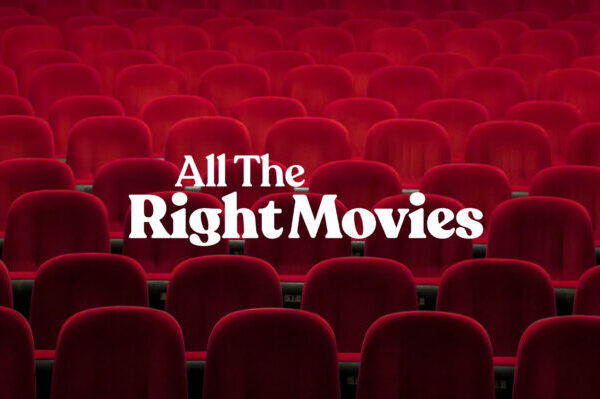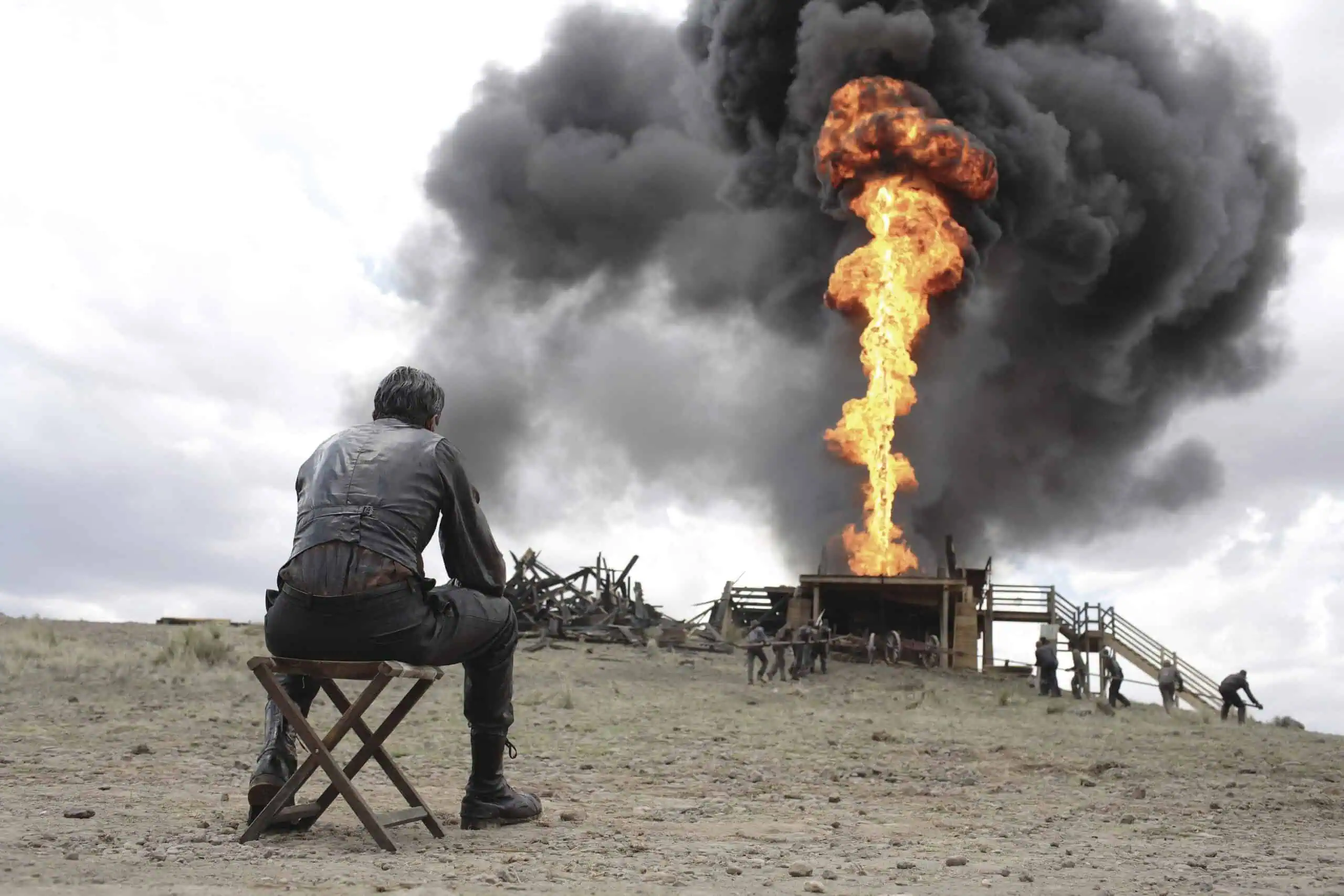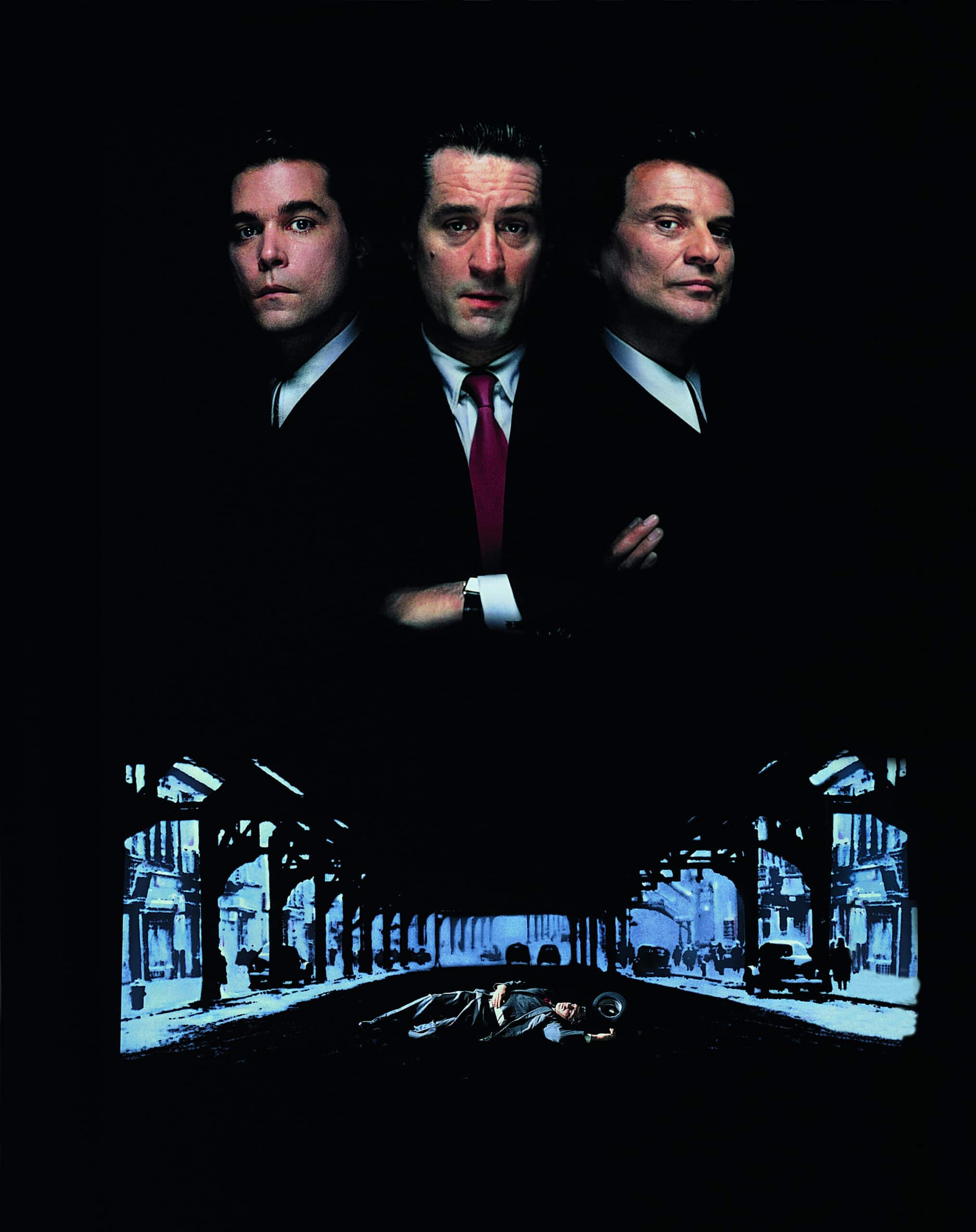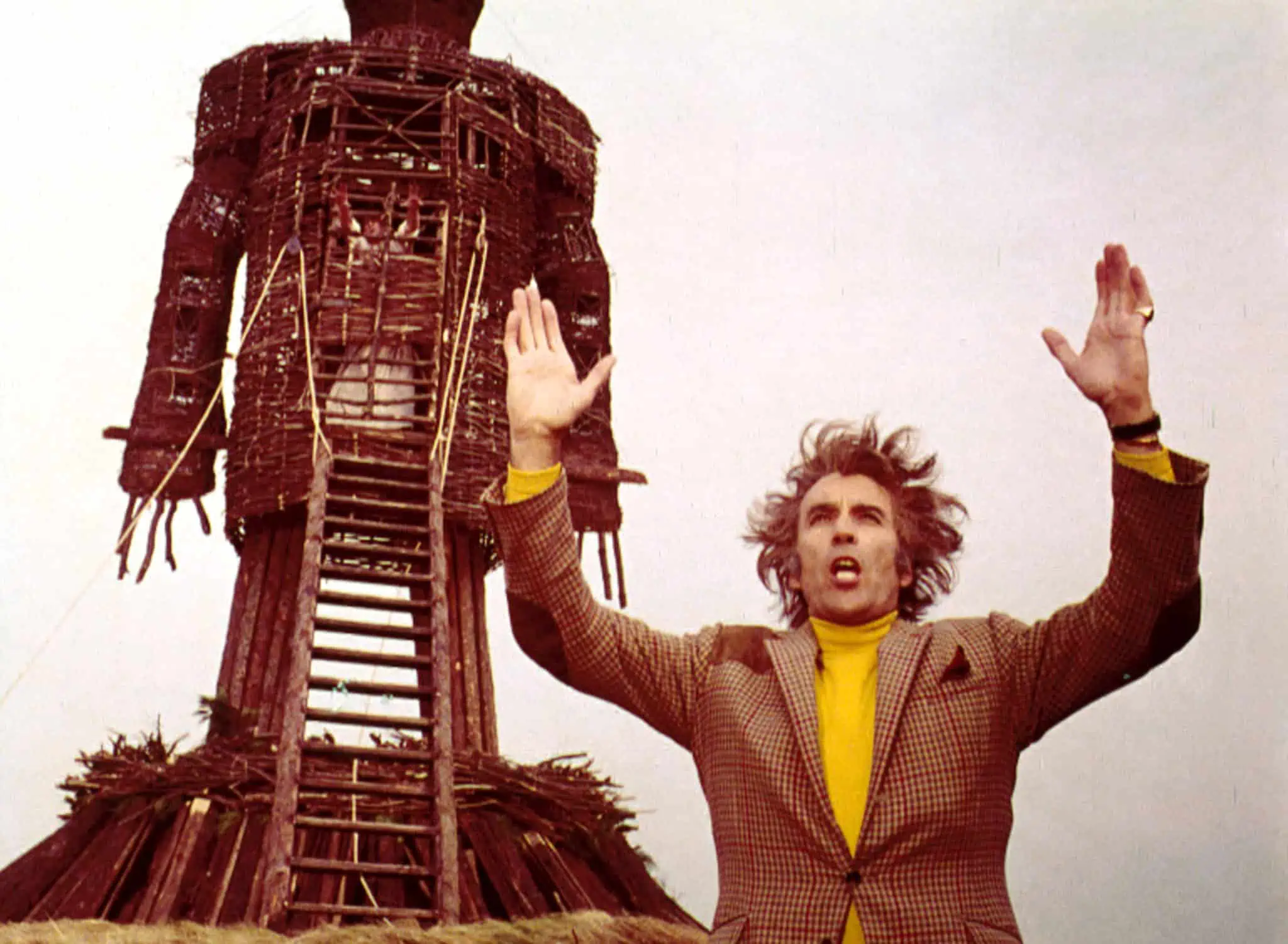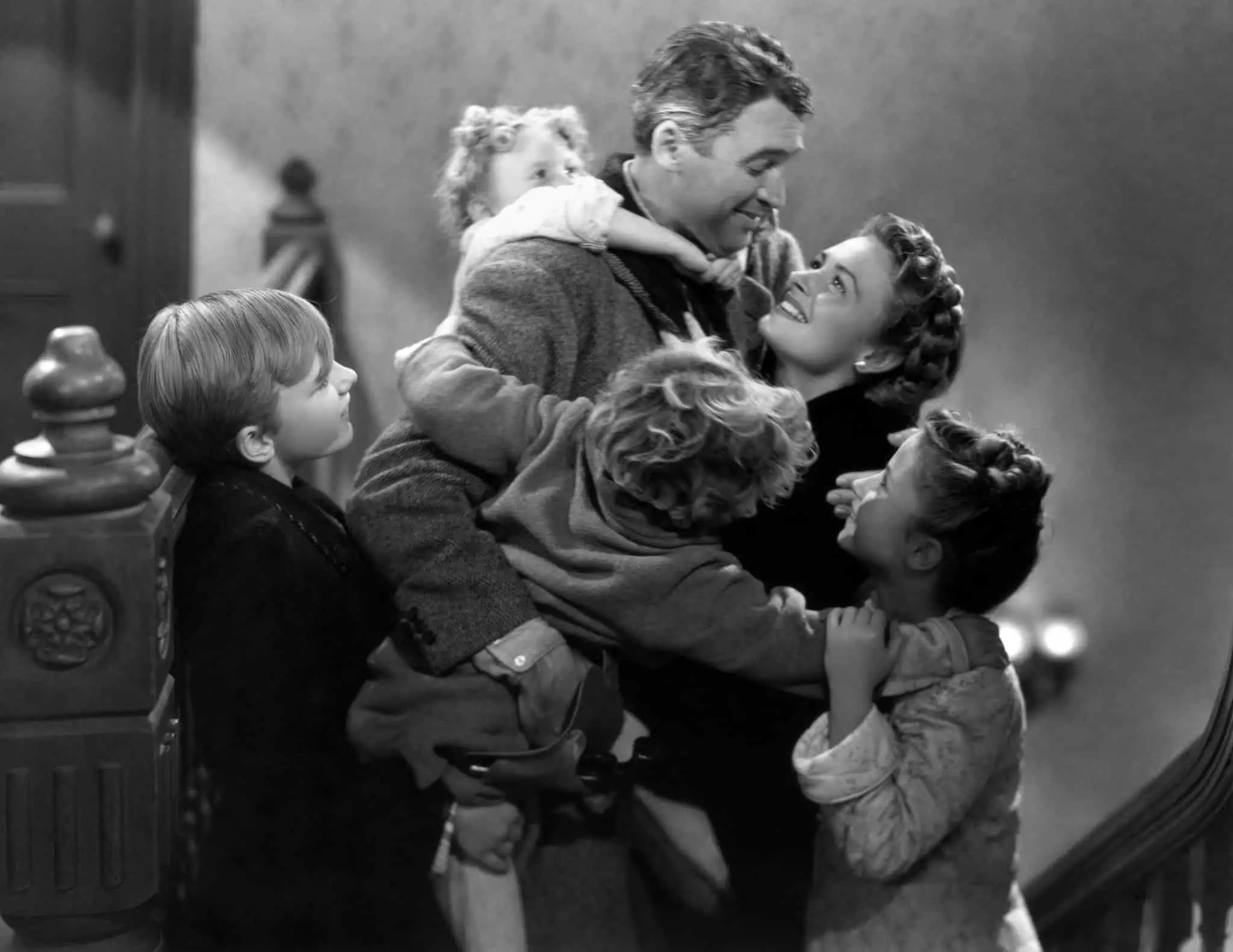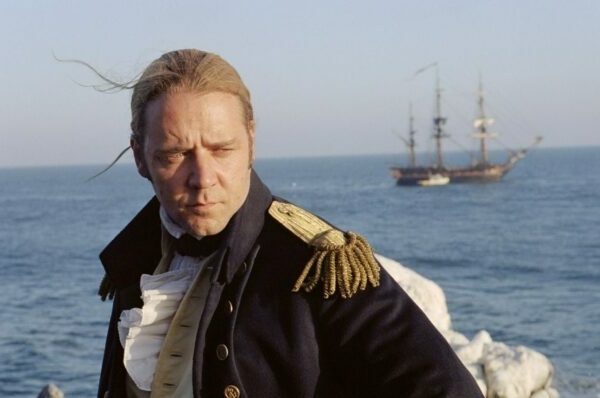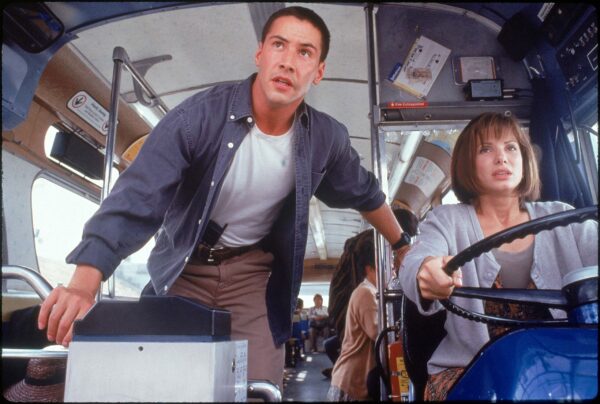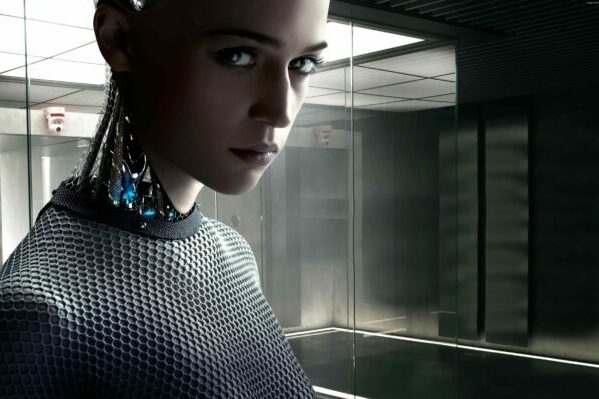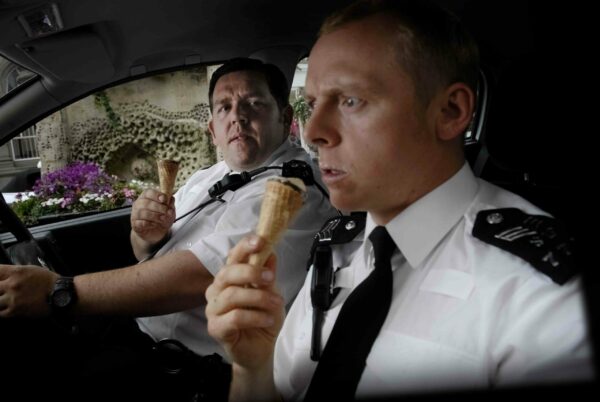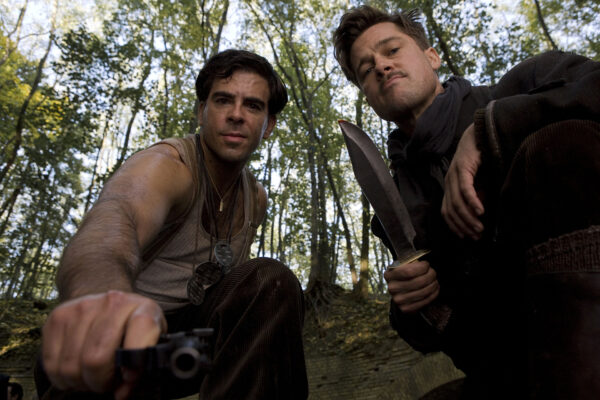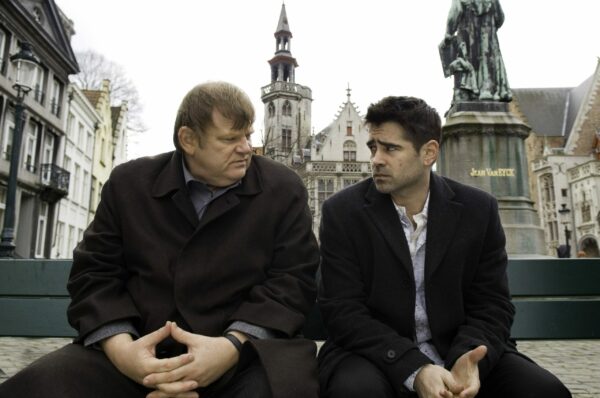
Seminal superhero film The Dark Knight opened in 2008 to a commercial and critical success not seen for a comic book movie. The film pitches the Caped Crusader against the Clown Prince Of Crime – The Joker – and established Nolan as one of the most acclaimed directors this century.
The biggest blockbuster filmmaker this century, Christopher Nolan films have tended to be landmark cinematic events for the last decade. This can possible be traced back to Nolan’s Dark Knight trilogy and, more specifically, the second entry, The Dark Knight (2008). Acclaimed as one of the greatest Batman films, The Dark Knight’s influence on action films since is difficult to overestimate. Would the Marvel series have been as succesful had audiences not been primed for superheros by Nolan?
We’ve got 25 huge and fun facts about The Dark Knight. The making of one of the great blockbusters of the 21st century. And here we go…
1. Nolan foreshadows the story before the movie even starts
All three of the Nolan Batman films start in the same way, where we’re shown the Bat symbol moving towards the camera. In each of the three movies, the way the symbol is presented foreshadows what happens in the film. So, in Batman Begins (2005), we see a colony of bats, out of which emerges the bat symbol – then, in the film, Batman takes his fear of bats and turns it into Batman. In The Dark Knight Rises (2012), the symbol is surrounded by ice which cracks and breaks – in the film, the bad guy, Bane, breaks Batman’s back. And in The Dark Knight, the symbol is engulfed in flames. Because some men (like the Joker) “just want to watch the world burn.”
The three versions of the bat symbol before the three Nolan Batman movies
2. There is a link between Heath Ledger’s Joker and the old, 1960s TV version
We first meet Heath Ledger’s Joker in the opening sequence, where he and his crew perform a bank heist. The robbers all wear clown masks, and the one that The Joker wears is exactly the same as one worn by Cesar Romero when The Joker made his first ever appearance in the Batman TV series from the 1960s.
Cesar Romero as the Joker, wearing the same mask as seen in The Dark Knight
3. The opening sequence utilised incredible practical effects
The opening sequence was actually shot in a post office, dressed up to look like a bank, and the moment the bus crashes backwards through the wall was very difficult to pull off. In order to accomplish this, the special effects team (headed up by Chris Corbould) had to take the bus apart, then reassemble it and hide it behind a huge false wall they had built on the set. They then used an air cannon to propel the bus backwards through the wall.
The bank heist, ending with the moment the school bus crashes through the wall
4. The film was Nolan’s first – and still only – movie sequel
Nolan didn’t make Batman Begins with a sequel in mind – he just wanted to tell the story of the origin of Batman. After it released and was a huge success, though, Warner Bros wanted him to return and helm the sequel. There were 2 main factors that interested Nolan in returning:
- He’d never made a sequel before, and saw that as a new challenge.
- The Batman Begins screenwriter, David S. Goyer, had a treatment for the sequel with The Joker as the villain and Nolan felt like he knew what to do with that character.
5. Nolan prepped the cast and crew with carefully selected movies
Nolan had a very specific vision in mind for the film he wanted to make and, to get that across to the cast and crew, he put together a screening list. The first 4 days of production, Nolan didn’t shoot anything and screened two films a day to the entire cast and crew to get them in the right frame of mind. The films were: Heat (1995), Cat People (1942), Citizen Kane (1941), King Kong (1933), Batman Begins (2005), Black Sunday (1977), A Clockwork Orange (1971), and Stalag 17 (1953).
The bank robbery sequeunce from Michael Mann’s Heat, a major influence on The Dark Knight
6. Batman’s voice changes quite a bit from the first film
One of the few criticisms The Dark Knight has generally received is around its lead character – Christian Bale’s Batman, and specifically, his voice. Batman’s voice is noticeably different from the first movie, much gruffer, more hoarse, and more aggressive.
If there are any issues with Batman’s voice, it’s actually down to Nolan, not Christian Bale. During filming, Bale’s voice was more toned down like in the first film but, in post Nolan had it edited to a rougher, grittier sound.
The evolution of Batman’s voice across the Nolan trilogy
7. Batman has a new and improved Batsuit
The batsuit in Batman Begins, while looking great, was quite restrictive for Christian Bale. The head and body pieces were all one mould, making it impossible for Bale to turn his head, and difficult to carry out fight scenes effectively. In The Dark Knight, however, an entirely new suit was constructed so the cowl was separate to the neckpiece.
Creating the batsuit for The Dark Knight
8. Bale trained in many martial arts for the film
Batman is a ninja, highly trained in multiple martial arts so, for the movie, Bale trained in a very specific fighting style called Keysi. Nolan wanted Batman to use an actual, real fighting style. They looked at a range of different techniques and styles, and decided Keysi was the one because it’s effective against multiple assailants, which obviously suits Batman.
Bale did some of his own stunts, too. He tried riding the batpod – Batman’s motorbike – himself, but couldn’t stay on it. It was difficult to ride and only one stuntman could stay on it. So that’s him in all the batpod shots. It is Bale though, in the amazing helicopter shot where we see Batman observe Gotham. That was filmed on top of the Sears Tower in Chicago and Bale said “It was important for me to do that shot because I wanted to be able to say I did it.”
9. Two-Face could have been played by somebody else
One of the main characters in the movie is Harvey Dent, Gotham’s D.A. who goes on a tragic journey from Gotham’s White Knight to becoming psychotic supervillain Two-Face, after the Joker murders his fiancée, Rachel Dawes.
Two-Face is played by Aaron Eckhart, but he wasn’t the first choice for the character. Nolan’s first choice to play Two-Face was actually Matt Damon. Damon couldn’t do it due to scheduling conflicts with Invictus (2009), though.
Ryan Phillippe, Hugh Jackman, Mark Ruffalo, Liev Schreiber, and Josh Lucas were also considered for the part but, having seen him in Thank You For Smoking (2005), Nolan asked Eckhart to audition.
Having won the role, Aaron Eckhart took inspiration for the character from iconic U.S. political figure, Robert Kennedy. A politician who had taken on the mob. He also studied people who had a split personality medical condition and the psychological trauma suffered by burn victims.
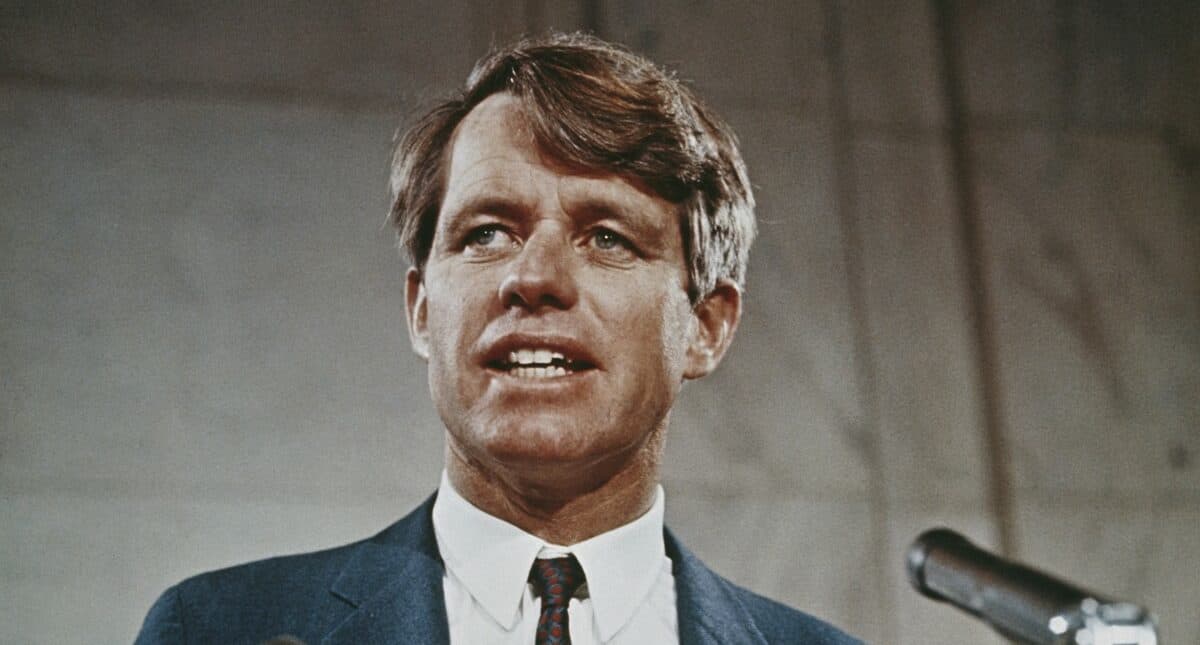
Robert Kennedy, an inspiration for Harvey Dent
10. Two-Face was created with CGI
With regards to Eckhart’s appearance as Two-Face, Nolan’s plan was originally to use make-up to create his scarred, burned visage but quickly changed his mind when he realised the limitations of make-up – it’s easy to add to the face, but not to take away from it. He had several versions of the scarred face designed using CGI and Nolan went for what he called the most realistic-looking one.
To achieve the effec on-screen, Eckhart then acted all of the scenes as normal and, for each shot, three HD cameras were set up at different angles to capture each side of his face. Eckhart wore markers on his face and a prosthetic skullcap, which the CGI engineers then used to position the CGI effect on top of his face.
The CGI Two-Face
11. Nolan always wanted Heath Ledger to play The Joker
After liking him in Brokeback Mountain (2005), Heath Ledger was always the person that Nolan had in mind to play the Joker, but with it being such an iconic part, some others came out and publicly expressed interest around the time of casting. This included Paul Bettany, Adrien Brody, Steve Carell and Robin Williams.
In the audition process, the part came down to three people: Heath Ledger, Hugo Weaving and Sam Rockwell.
Nolan was impressed with how Ledger totally lost himself in the character and said he saw that Ledger was the only person who understood the psychological aspect they wanted to draw out of the character. He said:
“I met with Heath and were on the same page about what The Joker needed to be. Different to what came before. Frightening. Not comedic, but funny. A force of pure anarchy.”
The Joker reveals himself to the mob families of Gotham
12. Nolan and Ledger took inspiration from various sources to create The Joker
Nolan knew early on what type of villain the Joker should be. He said, “The greatest villains in movies, the people who most get under our skin, are the people who speak the truth.”
A major influence for the character was Batman #1 – the first Batman comic book. This is where The Joker’s motivation is not money or power, he simply wants to cause public disorder. With this in mind, Nolan brought in one of the writers who created The Joker in 1940 – Jerry Robinson – to act as consultant throughout.
Following this, in his preparation for the role, Heath Ledger went method. He hid away in a motel room for 6 weeks. During this time he developed the voice, the laugh, the tic, the walk, and the make up of The Joker. He also kept a diary which referenced A Clockwork Orange and its antihero Alex DeLarge.
In the film, The Joker has a Glasgow smile, and his white skin is make up, rather than his actual skin colour, which is how he’s normally portrayed. Ledger designed the make-up himself, using cheap cosmetics from a drugstore. Once his design was approved, the makeup team replicated that look each day for filming. A nice character detail is that, throughout the film, you can see dried red and white makeup on The Joker’s fingers and under his fingernails after he’s applied it to his face.
The scars around The Joker’s mouth were created as prosthetics and they kept coming unstuck. Ledger had to lick them back into place, and this is where The Joker’s tic comes from where he licks his lips.
Ledger described his Joker as, “a psychopathic, mass murdering, schizophrenic clown with zero empathy.”
13. The Joker is loosely based on three rock stars
The costume designer was called Lindy Hemming. Nolan told her he wanted to be able to imagine what The Joker smells like, just from looking at him. She then based the The Joker’s look on famous rock icons like Johnny Rotten, Iggy Pop and Pete Doherty. Not entirely flattering to those three.
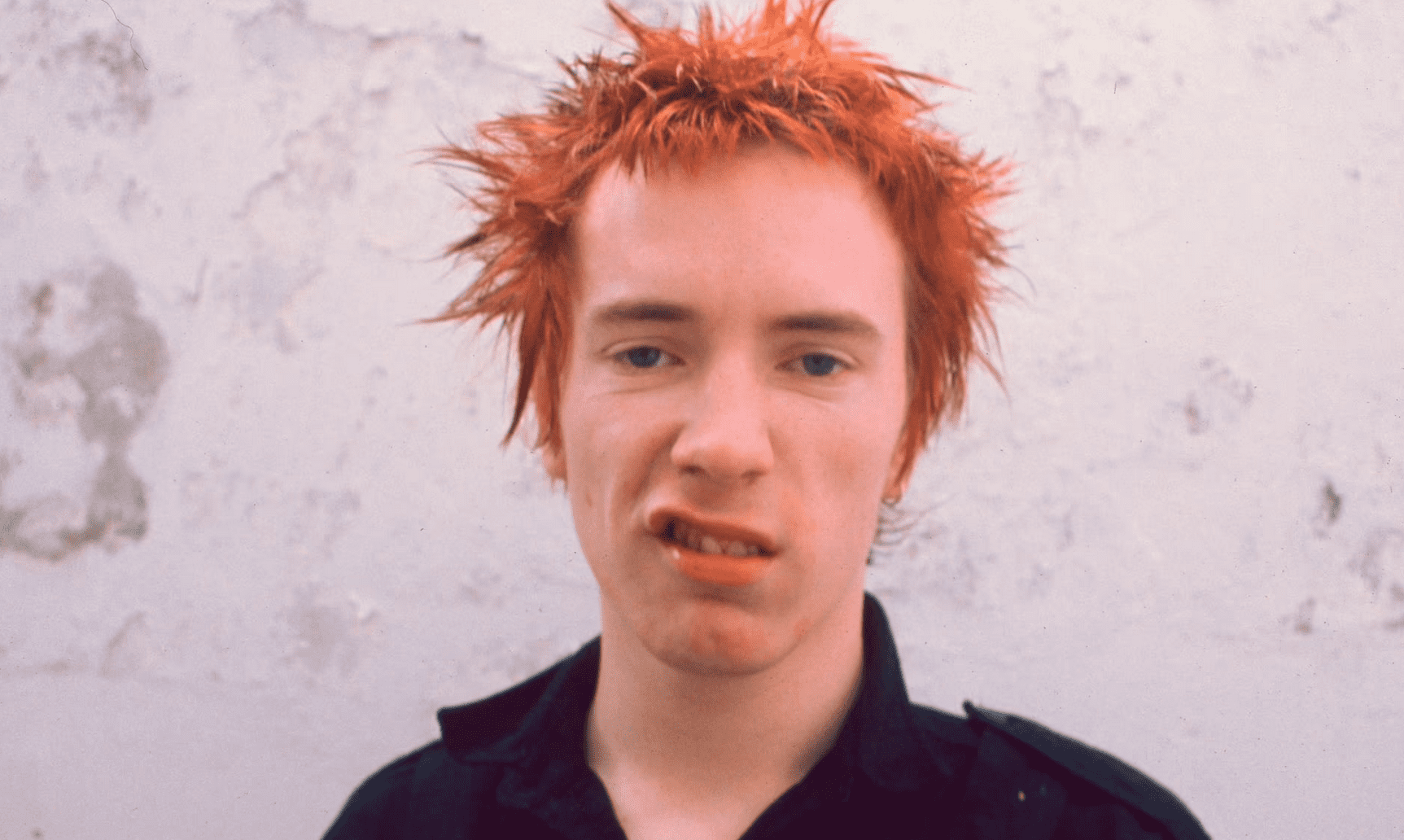
Johnny Rotten, an inspiration for the look of The Joker
14. Ledger stayed in character throughout the shoot
During production, the crew would stick around if they knew Ledger was coming on-set as The Joker, as everybody wanted to watch him.
Aaron Eckhart said that, between takes, Ledger would walk around in character, mumbling to himself. After filming the scene where The Joker talks to Two-Face in the hospital, Ledger grabbed Eckhart’s hand aggressively and, after filming the scene he said, “That’s what acting’s all about.”
The hospital scene between The Joker and Two-Face
15. Ledger won a posthumous Oscar for his performance
Heath Ledger tragically passed away in January 2008 at just 28 years old, but his iconic performance won him a posthumous Best Actor in a Supporting Role Oscar – the first time anybody had won a posthumous Oscar since Peter Finch for Network in 1976. It was also the first time an Academy Award had been awarded in a major category to a comic book movie.
Ledger posthumously won a total of thirty-two acting awards for his work on this movie, including the Oscar, Golden Globe, BAFTA.
Heath Ledger posthumously wins Best Supporting Actor
16. There’s more astonishing practical effects work in the car chase
One of the standout images from the film is during the huge midpoint car chase sequence where Batman flips over an 18-wheeler truck that The Joker is driving. This moment wasn’t done with CGI or scale models, they actually flipped over a truck for real.
The special effects supervisor on the film was called Chris Corbould and, when Nolan told him what he wanted to do in this sequence, Corbould laughed. Then he realised Nolan wasn’t joking and said, “you’re kidding, right?”
Corbould tried to persuade Nolan to flip something smaller and Nolan agreed. They were going to do one of the SWAT vans but then Nolan came back a couple of days later and said “no, sorry, it has to be an 18-wheeler.”
So, what Corbould and his team did was build a huge rig that fit on the underbelly of the truck. On this rig was a huge steel piston that would shoot out the bottom to make the truck flip. To get the piston to shoot out with enough force, they had to trigger it with TNT. They then reinforced the cab with steel so the driver could stay in the truck as it was flipped. So when you see it onscreen, there’s actually someone in the truck.
Batman flips over the truck
17. Heath Ledger was very in character during the interrogation scene
Following on from the car chase, Batman interrogates The Joker in GCPD station, and resorts to assaulting him. It’s one of the most famous scenes in the movie, and Bale said that when it was filmed, Ledger was so in character, he asked Bale to hit him as hard as he could, for real. Bale refused.
Also, the interrogation scene originally ended with Batman kicking The Joker in the head right before he leaves. This moment was removed in editing, because Nolan felt the action seemed, “a little too petulant for Batman.”
Batman interrogates The Joker
18. Hans Zimmer brought some strange methods and influences to his music
The Batman theme from Batman Begins is heard only twice in The Dark Knight, as they thought that a melodic heroic theme would overlook the complexity and darkness of the character. Hearing the tune only twice would create what Zimmer called, “a musical foreshadowing.”
The Joker theme is called ‘Why So Serious?’ and is based on two notes, D and C, which came from DC Comics. And Zimmer also had some pretty bizarre methods when he was writing that theme. He played piano wires with razor blades, and the guitar with shards of metal, to create The Joker’s theme.
The Joker’s theme by Hans Zimmer
19. The Dark Knight used groundbreaking technology
The Dark Knight pushed the technical boundaries of filmmaking with its use of IMAX and was the first feature film in history to be shot using IMAX cameras.
IMAX is basically a set up of a series of high-resolution cameras, film formats, projectors, and theaters with very large screens with – specifically – a tall aspect ratio. It means the frame of the shot is essentially taller than what you would typically see in a movie – giving the director a bigger canvas to play with.
Nolan had wanted to shoot in IMAX for several years, and used this film as his chance to do so. He said he wanted to use it to, “immerse the audience in the story visually.”
Because it had never been done before, IMAX did cause some unforeseen problems. The cameras were very large and noisy so they were difficult to carry and they’d have to be careful to not let the noise spill into the scene, or the take would be ruined. The DP, Wally Pfister, said:
“There’s a whole book about how to film in IMAX, but our inclination was to break all those rules. We did what felt right to us and addressed composition shot-by-shot.”
37 minutes of The Dark Knight is shot in IMAX. Some of the big action-heavy sequences, and with various helicopter shots. The opening bank heist and the car chase sequence where The Joker is after Dent, are the most well-known uses of it in The Dark Knight.
The fantastic shots in The Dark Knight, many of them IMAX
20. The movie has several themes
Batman Begins had a very clear theme around fear and it’s threaded through the narrative in several ways. In The Dark Knight, the theme is chaos. The Joker’s aim is simply to cause chaos, and he calls himself, “an agent of chaos.”
Mainly, though, duality and choice is a very clear theme; Batman and The Joker are two sides of the same coin; We have a Dark Knight and a White Knight; Two-Face is the personification of duality; Batman has to choose between Rachel and Dent; The ferry scene at the end is all about choice.
The ferry sequence, based around the theme of choice
21. The Dark Knight revolutionised digital marketing for movies
Internet marketing for movies was becoming more sophisticated around the time that The Dark Knight was released, and the film pioneered what would later become the standard marketing campaign for several blockbusters.
During the 15 months that preceded the film’s release, Warner Bros. ran an online viral campaign called, ‘Why So Serious?’ – they shared online pamphlets of Harvey Dent running for office (and the Joker’s ‘modifications’ to those pamphlets), distributed dollar bills that the Joker had written on, and created a website for Gotham Cable News (GCN).
Pictures of the Joker and the “Why So Serious?” saying quickly became Internet memes, which turned The Dark Knight into the first major motion picture to have had a truly viral online marketing campaign. Any major blockbuster since has tried to create a similar online buzz
A viral marketing campaign surrounded The Dark Knight in 2008
22. The film caused some controvery in Turkey
Shortly before the movie came out on DVD, Warner Brothers were taken to court by the mayor of the city of Batman, a city in Turkey. Even though it wasn’t used in the title, the character name of Batman was considered an infringement. The mayor’s name was Huseyin Kalkan and he said the film caused a negative impact on his city. He said: “There is only one Batman in the world. The Americans used the name of our city without informing us.”
23. The Joker burned an awful lot of money
Having become the biggest mob boss in Gotham, The Joker has accummulated a lot of cash and, towards the end the second act, shows how little he cares abvout material wealth by burning a huge pyramid of money.
Esquire magazine worked out how much money he burned, and it was a lot. $6.3 billion in total!
The moment The Joker burns $6.3 billion
24. Heath Ledger wanted to be a director
After filming his scenes, Heath Ledger would usually stick around on the set to watch Christopher Nolan at work. He did this to learn – Ledger actually saw his future not as an actor, but as a director.
Nolan helped Ledger out by giving him advice and letting him direct two scenes in the film. Ledger directed both of the homemade videos that The Joker sends to GCN: the first video where The Joker kills Brian Douglas – one of the ‘Batmen’, the vigilante group who dress like Batman – and then the scene where the reporter Mike Engel reads The Joker’s statement.
The homemade video directed by Heath Ledger
25. It was a box office smash hit
An iconic movie nowadays, and The Dark Knight was a box office smash hit when it was released. On a budget of £185 million, The Dark Knight took $1,004,934,033 globally, and surpassed Batman Begins’ total after just 6 days. It was such a hit, The Dark Knight set all manner of box office records:
- It was the first comic book movie to cross the $1 billion mark worldwide.
- Opened in 4366 theaters across the US, which was a record at the time.
- Broke the record for the largest opening weekend of all time – $158.4m.
- Broke the record for reaching the $500 million mark faster than any other movie, after 45 days.
And there you go – 25 fascinating and fun facts about The Dark Knight – one of the great superhero films. Please share on your social platforms, and subscribe to our YouTube channel for lots of great video content.
You may also like...
The beginning of a beautiful friendship
Stay up-to-date with all things All The Right Movies by signing up for our e-newsletter.
